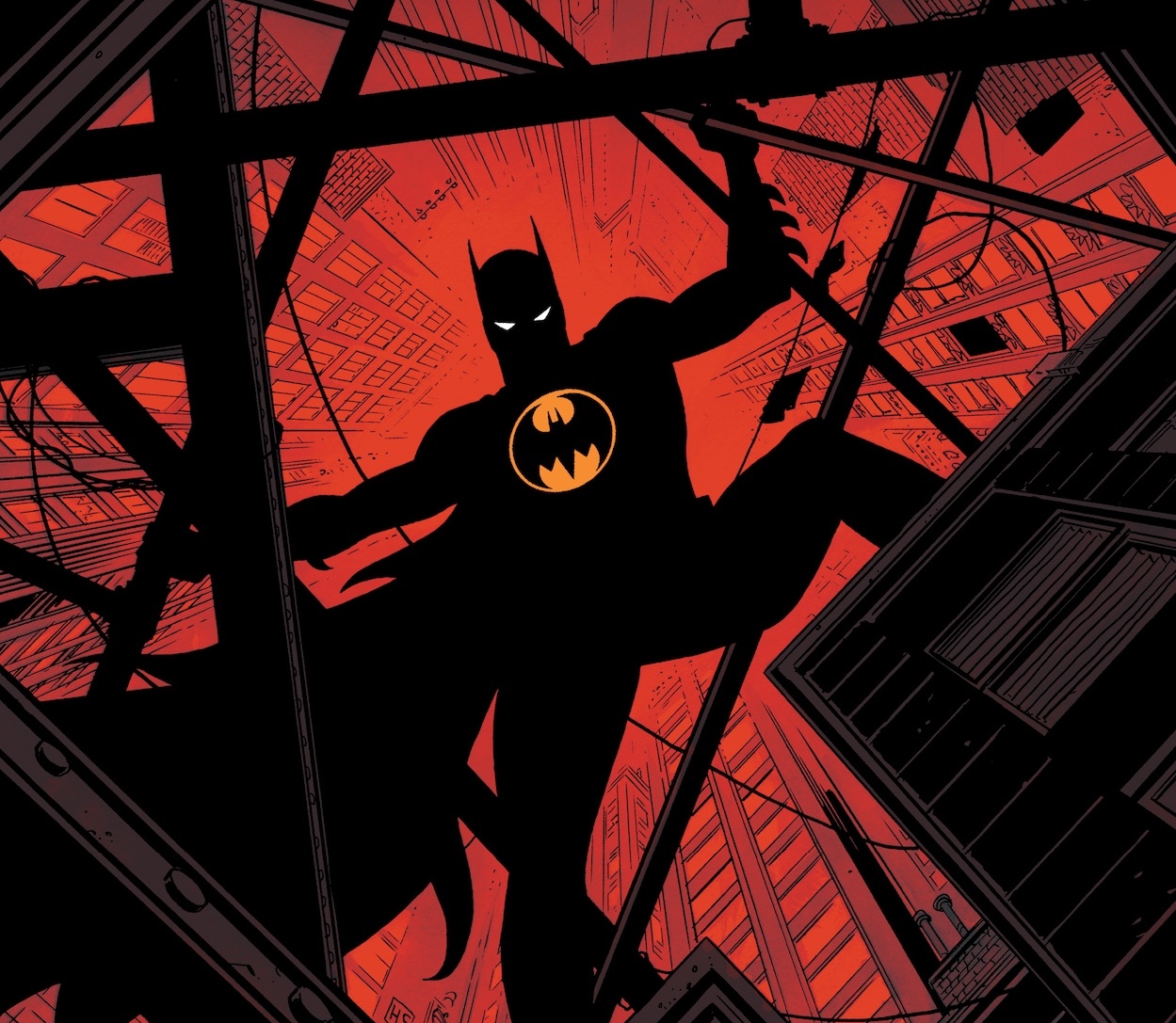Batman: Dark Patterns isn’t just another moody mystery series. It’s a bold psychological excavation of Gotham City — and of Batman himself — told through the lens of horror, noir, and myth. Written by Dan Watters, illustrated by Hayden Sherman, colored by Triona Farrell, and lettered by Frank Cvetkovic, the 12-issue maxiseries reframes Batman’s early years as a haunted journey through the rot at Gotham’s core.
Rather than offering up a continuous plotline, the series unfolds as four interlinked yet standalone investigations. Each case acts as a deep dive into Gotham’s psyche, peeling back the layers of a city in pain and the young vigilante who tries, and sometimes fails, to soothe the savage beast. Two arcs have already been released, with a third — titled “Pareidolia” — set to debut in June.
In an interview conducted ahead of the series launch, Watters shared several insights that help illuminate the creative vision behind Dark Patterns. We’ve woven those reflections throughout the following piece as we explore the evocative might of this daring new story experience.
“Each case is born from Gotham and its people adapting to the horrors they’ve been subjected to,” Watters said. “The criminals are superstitious and cowardly… but how could the whole city not be superstitious and afraid?”
Case One: “We Are Wounded” – Gotham as Body Horror
The opening arc (issues #1–3) sets the tone: Here, a series of murders are linked by grotesque wounds, echoing medieval anatomical drawings. These depraved carvings lead Batman into a nightmare centered around Ace Chemicals. As he investigates, the mystery unfolds like a body horror thriller, thick with dread and instability.
What’s notable here is the atmosphere. Sherman’s jagged, asymmetrical panel layouts convey Batman’s fragmented perception, and Farrell’s coloring evokes both clinical coldness and blood-slick terror. Batman is still learning here — not just how to be effective, but how to bear witness to suffering without succumbing to its pressures.
The ambiguity is palpable with emotional weight, capturing a version of Batman who isn’t fully formed, but already carries the city’s trauma with him like a second skin.
Case Two: “The Voice of the Tower” – Gotham as Symptom
In issues #4–6, Dark Patterns shifts from visceral violence to psychological manipulation. Scarface Towers becomes a pressure cooker of paranoia and mass psychosis, where residents wear ventriloquist masks and obey a voice in the walls. The horror is subtler, but more insidious — it’s about how Gotham gets inside your head.
“Batman’s role [here] is as a wounded healer shrouded in urban myth,” Watters said, adding that he’s someone “who seeks to give hope to the hopeless.”
This arc crystallizes the creative team’s core thesis: Gotham is not just a city — it’s a disease, a sentient environment, a trauma engine. Sherman turns its architecture into looming threats. Farrell’s colors vibrate between muted despair and hellish mania. Cvetkovic’s lettering, meanwhile, becomes a character itself, echoing madness and tension as dialogue crowds and fractures across the page.
A Vision in Sync: What the Creative Team Is Building
What makes Dark Patterns exceptional isn’t just the mood or the mysteries; it’s the cohesion between story, structure, and theme. Watters’ scripts strip away Batman’s usual grandiosity to find something rawer: a man confronting fear as a shared societal illness. Sherman’s visual language supports that core vision, splintering panels and warping perspectives. Farrell’s colors layer tone on top of trauma, and Cvetkovic guides the rhythm with voice and space.
“Batman: Dark Patterns explores the pulpiest part of the Dark Knight’s rich history,” Watters said. “And gives readers an entirely new perspective on the early years of DC’s Dark Detective.”
They’re not just telling detective stories. They’re building a reimagining — one that positions Batman not as a stoic enforcer of justice, but as a mythic responder to Gotham’s cry for help. This is a Batman motivated not by vengeance, but by grief, responsibility, and a desperate need to heal the wounded places around him.
What’s Next: “Pareidolia” and the Fire Beneath Gotham
Launching in issue #7, the third arc — “Pareidolia” — dives into one of Gotham’s oldest neighborhoods, the Rookery, after a body is found charred beyond recognition. The term itself refers to seeing patterns in chaos, and the arc promises a story about generational trauma, false perceptions, and the ghosts that still haunt the city’s foundations.
A preview hints that Batman is nearing a breaking point (emotionally and physically) while still holding back the tide of darkness one case at a time. Only in this case, it’s fire, literally.
The Big Picture: Batman as Gotham’s Mirror
Across its many cases, Batman: Dark Patterns doesn’t ask, “Whodunit?” so much as “Why does Gotham keep breeding horror?” The series positions its hero not just as a detective, but as an empathic conduit — someone who absorbs Gotham’s pain in hopes of cleansing it. This Batman walks into nightmares not just to solve them, but to feel them. To carry their weight. To remind us that justice means understanding the wound before you can truly suture it shut.
With two more cases to come, Dark Patterns is fast becoming one of the most resonant and cohesive explorations of the Dark Knight’s psyche in years. Gotham is a horror show, but it’s also a place worth saving. And Batman is still learning how.
A Batman story that reads you as much as you read it. Read More

